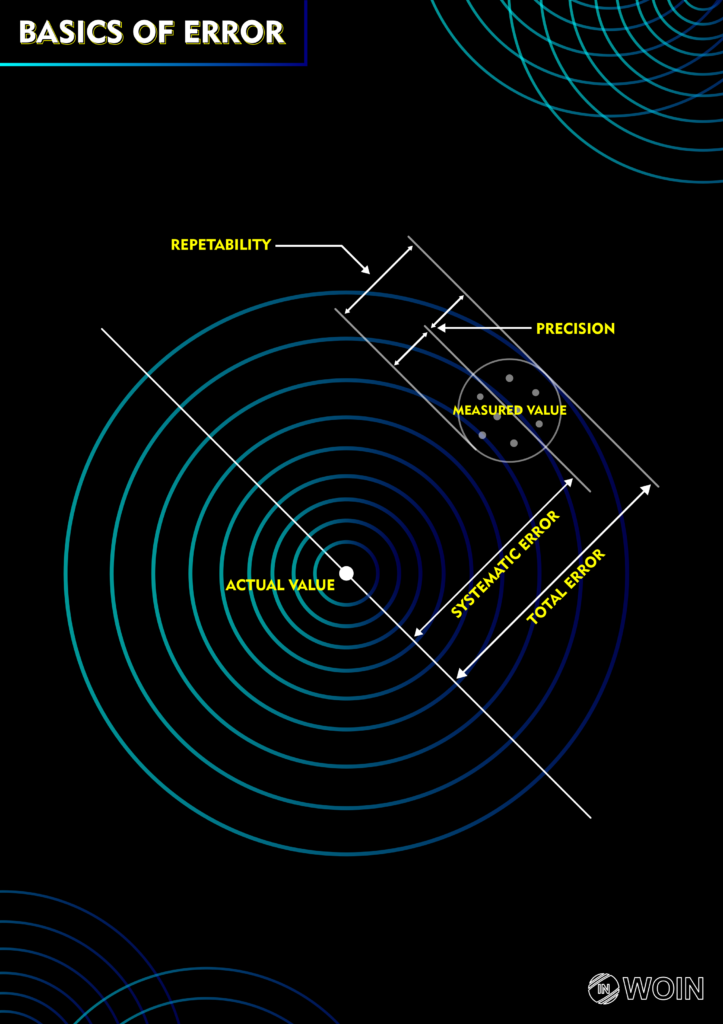In this article, I will try to explain Accuracy terms in instrumentation in a much simpler way and what considerations you have to take care of while reviewing the vendor offers.
Right now, I will explain only the practical aspects and what consideration is needed to take care of while you are reviewing the vendor offers.
If you want to see an internationally defined definition of accuracy then you have to refer to VIM (International Vocabulary of Basic and General Terms in Metrology) published by ISO.
Introduction
Accuracy is simple yet poorly defined, manipulated, and misinterpreted by some unprofessional vendors.
Before we start, I want to share my recent experience when I was reviewing the multiphase flow meter vendor offer. The client’s strict requirement is +/-5% of the total flow and each phase flow.
But it is poorly defined and the vendor does not understand what the actual requirement of the client is. A total of three offers were received and all vendors have defined their product accuracy in different ways.
They all want to show that their product is the most accurate compared to their competitors; in short, all are not on the same page in terms of accuracy.
The multiphase flow meter is a much more costly item and you have to review the offer very carefully so there is no space for error due to technical understanding.

Clarity and Improvements in Accuracy Statement
1. When a vendor claims that the accuracy of the instrument is +/-1% we would assume that that means 1% of the actual reading but it is not always the case.
There are multiple ways to define accuracy and the vendor has to put the charity
some manufacturers write 1% of full scale (FS) and some write 1% Actual Reading (AR) and some also write 1% of Upper Range Value (URV). Therefore, vendors need to always include Accuracy with their basis as above.
The client companies also include the above case in their spec that they want this specific accuracy with this basis AR, FS, or, URV.
2. Another thing is rangeability/turndown if you didn’t see my article on this topic then pls. check it shows the measuring range of the sensor over which the stated accuracy %AR is guaranteed.
The vendor/Client always mentions the accuracy statement and also states rangeability/turndown over which their accuracy is guaranteed.
3. Vendors sometimes provide errors with a single error source but the vendor has to always mention the error with all the possible error sources.
like temperature effect, drift effect, static pressure error with zero, and span shift.
Conclusion
So, these are all the considerations that need to be taken care of while you are reviewing the offer. You have to be clear about what the client is asking and what the vendor is offering.
Always check that accuracy is mentioned with appropriate bases like AR, FS, and URV. and try that you get stated accuracy in %AR and also get rangeability/turndown ratio.
EndNote
I hope these resources and Knowledge will become helpful to you in the future. You can also give your input through the comment section.
And I continue to make this type of resource and knowledge-sharing posts on my website.
If you have any suggestions then feel free to ask in the comments and through email id, if you want to write an article on the website, please contact us by this mail id: contact@worldofinstrumentation.com
If you like this article, you can also like my previous article on Temperature measurement without thermowell.
And you can also follow our LinkedIn group which is specially made for sharing information related to Industrial Automation and Instrumentation.